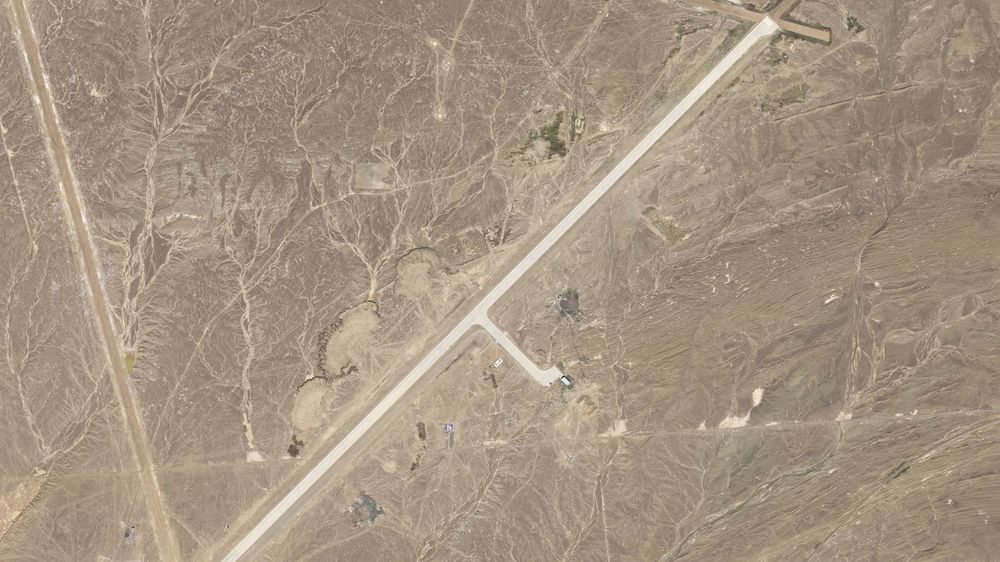Our researcher describes how malware is disabling popular security plugins on compromised WordPress websites to conceal malicious behavior and evade detection.
A commercial satellite photo may reveal a new Chinese space plane just moments after it landed at a remote site on the western side of China.
The photo, which is too low resolution to be conclusive, was snapped by the San Francisco-based company Planet. It shows what could be the classified Chinese spacecraft on a long runway, along with several support vehicles lined up nearby.
Terse statements by China’s official Xinhua news agency said only that a Long March 2F rocket had carried a “reusable experimental spacecraft” into orbit and that the launch and landing were successful. The landing took place on Sept. 6 at almost the exact time the photo was snapped by the passing satellite.
The mission took place this past weekend, shrouded in secrecy, but some clues are emerging about what China sent into space, and why.
Circa 2018 aerodrums.
LAS VEGAS (PRWEB) January 09, 2018.
Aerodrums today celebrates the live playing of an experimental variant of its air drumming instrument as part of a ground breaking musical performance introducing Intel’s keynote at CES 2018.
Percussionist Sergio Carreño accompanied pianist Kevin Doucette in a jazz improvisation featuring artificially intelligent avatars playing guitar and bass.
Circa 2018
Tesla is known for its electric vehicles — but now it’s hoping to add trucks to its roster of roadsters. Here’s everything we know so far.
Surfers have a concept they call progression. It is roughly the idea that each successive generation of wave riders is not constrained by the same idea of what is “impossible.” Progression often comes in small steps, usually helped by improvements in technology but every so often—like Laird Hamilton’s Millennium Wave at Teahupoo, Tahiti (1)—it comes in a giant leap when somebody does what everyone else was too scared to try. On page 1366 of this issue, Mitra et al. (2) have progressed molecular physics in a step that was unthinkable only a few years ago by laser-cooling a nonlinear polyatomic molecule, CaOCH3.
http://www.sciencemag.org/about/science-licenses-journal-article-reuse
This is an article distributed under the terms of the Science Journals Default License.
The Lygon blockchain platform, which runs on IBM Public Cloud, has reportedly successfully conducted its pilot since last year with Australian banks ANZ, Commonwealth Bank of Australia (CBA) and Westpac and a group of 20 Australian businesses.
Banks are expected to issue bank guarantees in just one day once they implement Lygon compared to the current paper-based guarantees that can take a month. The three Australian banks and retailers Scentre Group and IBM are planning to expand the Lygon platform for commercial use, according to a report on Sept 1.
A bank guarantee is a type of financial backstop offered by a lending institution. The bank guarantee means that the lender will ensure that the liabilities of a debtor will be met. The financial guarantees are said to be needed as part of retail property leases and from this month. Lygon chairman Nigel Dobson added that:
“The commercialisation of the Lygon platform represents a significant milestone for blockchain technology in Australia and globally. In digitising a bank guarantee, we’ve essentially transformed a three-way contract. We’ve digitised the paperwork, the process and the legality behind it…”
Australia gets more blockchain projects.
Listen to article.
« The Strategy also calls for greater cooperation, both with private actors and with international allies and partners, in particular for future capability development and operations. The DSS makes clear that part of the rationale behind this call for cooperation is ”burden-sharing”, but the United States is also interested in collaborating to benefit from its allies’ space programmes. Moreover, these collaborative efforts will be given significant attention in the short-term, therefore, the place that Europe wants to take in this framework should be raised now. »
#SpaceWatchGL
After an internal investigation, the US Department of Defense (DoD) announced that is standing by its decision to award the $10 billion JEDI cloud computing contract to Microsoft and not Amazon. The probe was triggered after Amazon complained that the integrity of the bidding process was cast into doubt because of statements by President Trump.
The Pentagon affirmed its initial decision awarding the contract to Microsoft, but acknowledged that the legal battle isn’t over. In a press release, it said it “determined that Microsoft’s proposal continues to represent the best value to the government” but added that the contract “will not begin immediately.” That’s because of a temporary injunction issued over an Amazon lawsuit arguing that the contract had “clear deficiencies, errors and unmistakable bias.”
« Has the universe been around forever? If so, perhaps it’s been bouncing back and forth in a never-ending cycle of big bangs in which all matter bubbles out of a singularity, followed by big crunches, in which everything gets swallowed up again to form that dense point from which the universe is born again. And the cycle continues over and over and over. »
All you need is some string.
Quantum technologies, such as quantum computers, quantum sensing devices and quantum memory, have often been found to outperform traditional electronics in speed and performance, and could thus soon help humans to tackle a variety of problems more efficiently. Despite their huge potential, most quantum systems are inherently susceptible to errors and noise, which poses a serious challenge to implementing and using them in real-world settings.









